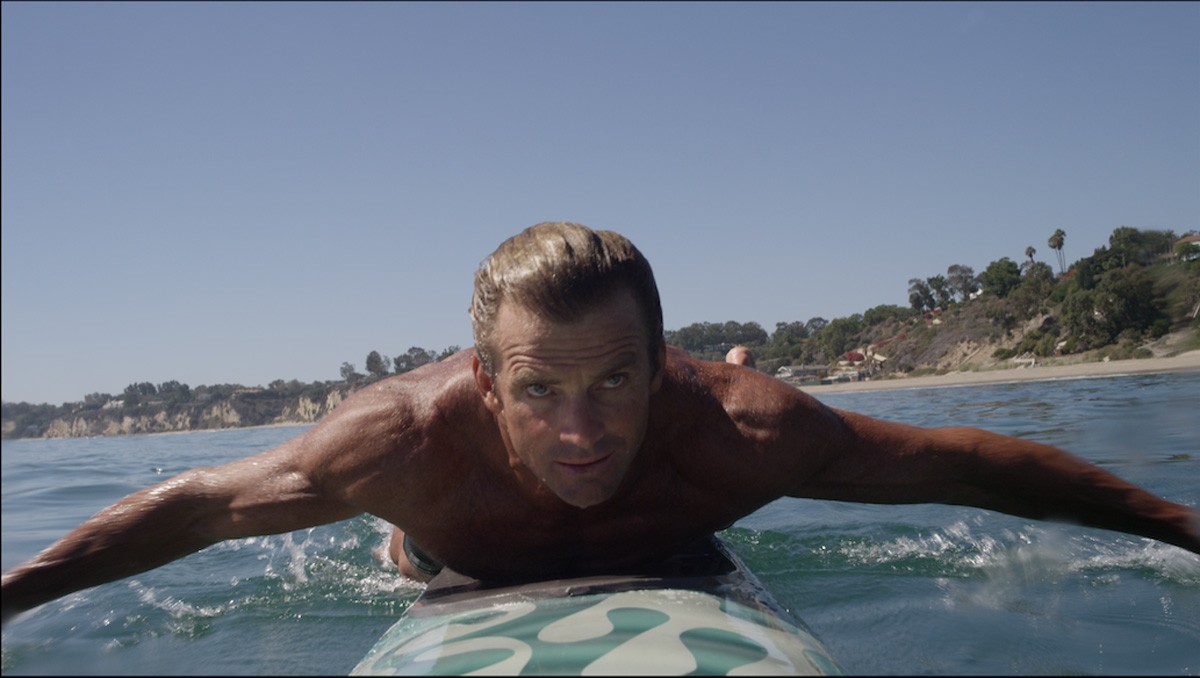
The big-wave surfer, waterman, inventor, model and sometimes actor who is the subject of Take Every Wave: The Life of Laird Hamilton says into the phone from his home on Kauai that he plans to be at the April 20 screening of the documentary that opens the 18th annual Newport Beach Film Festival.
Don’t be surprised if the 53-year-old arrives wet.
“I used to surf Salt Creek all the time,” Hamilton says when asked if he knows any Orange County breaks. “My grandparents lived on 9th Street in Laguna Beach. I bodysurfed the Wedge. San Onofre, Black’s, Newport, Huntington pier—I surfed all of those. Now I surf Malibu in the summertime. . . . HEY, SLOW DOWN!”
I’m thinking my rapid-fire typing on the other end of the phone receiver has gotten too loud, but the demand was actually shouted at a fellow who was apparently driving too fast through Hamilton’s residential neighborhood. After a calm conversation with the chap, who insisted he was only spinning his tires to show off, Hamilton gets back to business.
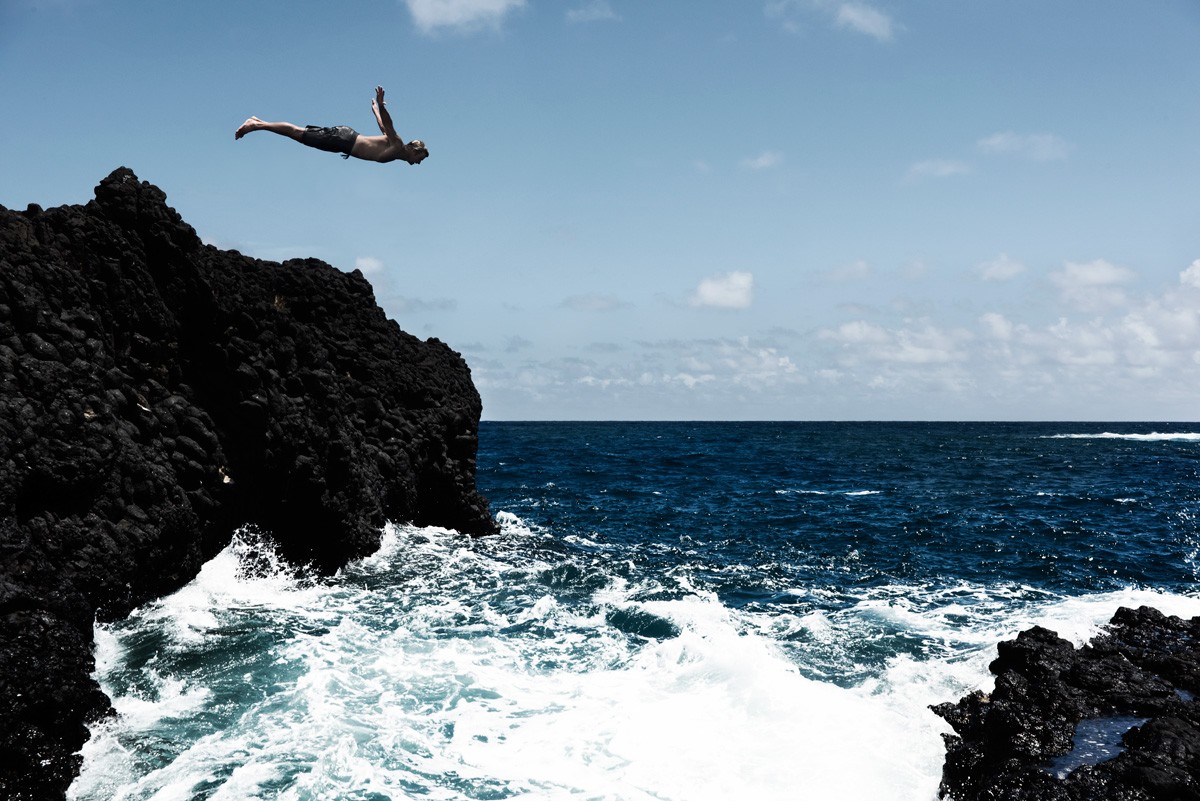
Business emerges as the bogeyman in Take Every Wave, a mostly warts-and-all look at the amazing rise of a genuine soul surfer who has carved out a multifaceted career that has made him a celebrity. This has pulled Hamilton in multiple directions, many of which he has traveled willingly, even at the expense of longtime friendships, his marriages and his banged-up body.
But think about it: If you asked someone off the street (as opposed to in the lineup) to name some professional surfers, “Laird Hamilton” would likely be mentioned within the top three. Yet, he does not compete, at least not against anyone other than himself, explaining in Take Every Wave that he is loath to be judged. Bill Hamilton, the surfer and board shaper who gave Laird his last name after marrying the boy’s single mother, says in the documentary that he believes his stepson never enters surf contests because he can’t lose.
Laird Hamilton was just emerging from a rowdy childhood in Hawaii, where he was subjected to taunting for being a haole (white boy), when he caught the eye of modeling and movie scouts. He parlayed those pursuits into side gigs where he co-invents cool things to ride in the water and on land (including golf courses). Keep in mind that he accomplished these in between his main obsession: riding any big wave anywhere in the world the moment he learns surf is (way, way, way) up.
As we spoke, Hamilton was letting his body rest from “a massive stretch we’ve had” of giant waves kicked up by late winter storms. “We have what we’re calling ‘March Madness,'” he says. Mention of the recent heavy rains of California, where Hamilton has a second home in Malibu, prompted him to remark, “It’s all connected.”
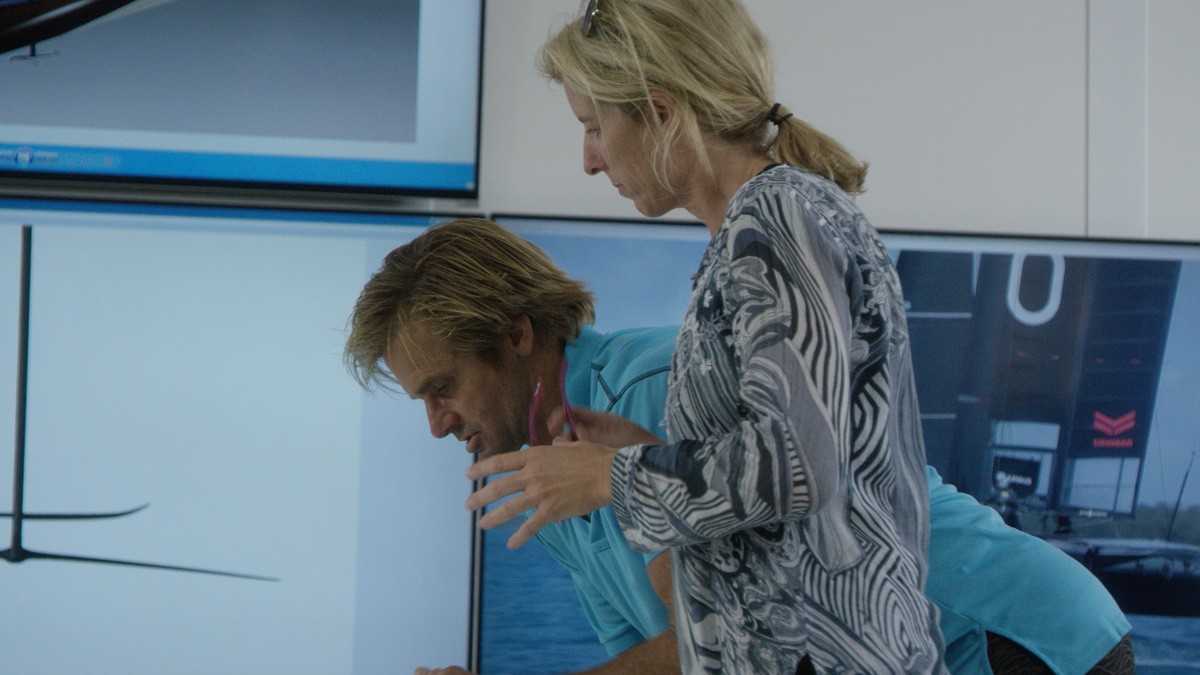
He confessed it will be difficult to leave Hawaii should the giants continue to roll in, but his family—he; his wife, Gabrielle Reece (of modeling, television hosting and professional volleyball playing fame); and their daughters, Reece Viola and Brody Jo—actually like splitting time between the Islands and the mainland.
“Migration is part of our DNA,” Hamilton says. “It’s good for you to move, to not be in any one place for too long.”
Fine. But doesn’t his heart sink every time he says goodbye to paradise?
“Actually, that happens on both sides. Ultimately, I say places are about people. We have such a great network of friends in Malibu.”
USA Today reported in 2008 that Hamilton and Reece belong to the “Malibu Mob,” celebrity locals who include John Cusack, Kelsey Grammer, Ed O’Neill, Justin Long and John McEnroe.
“You know, our life there, as summer is winding down and we’re getting ready to leave in October, it’s very quiet,” Hamilton says of Malibu. “It’s hard to leave. I don’t necessarily want to leave [Kauai] right now. I think you should feel that way, but you still have to just go.”
Take Every Wave director Rory Kennedy did not grant the Weekly an interview because she (understandably) did not want to take time away from her children, who were on spring break. So the reason why RFK’s daughter jumped into a film project unlike others she is known for (Last Days in Vietnam, Ghosts of Abu Ghraib, Pandemic: Facing AIDS) is put to Hamilton.
“That’s a good question,” he replies. “Well, listen, when we first proposed it to her, I actually only knew her indirectly because we live in the same area in the summertime. She was like not interested. I totally understood. I wouldn’t want her to direct a film she is not passionate about and not interested in the subject. She just didn’t know me, she just thought I was a surfer, and she was not interested in a surf movie. But I was not interested in that; there are plenty of those.
[
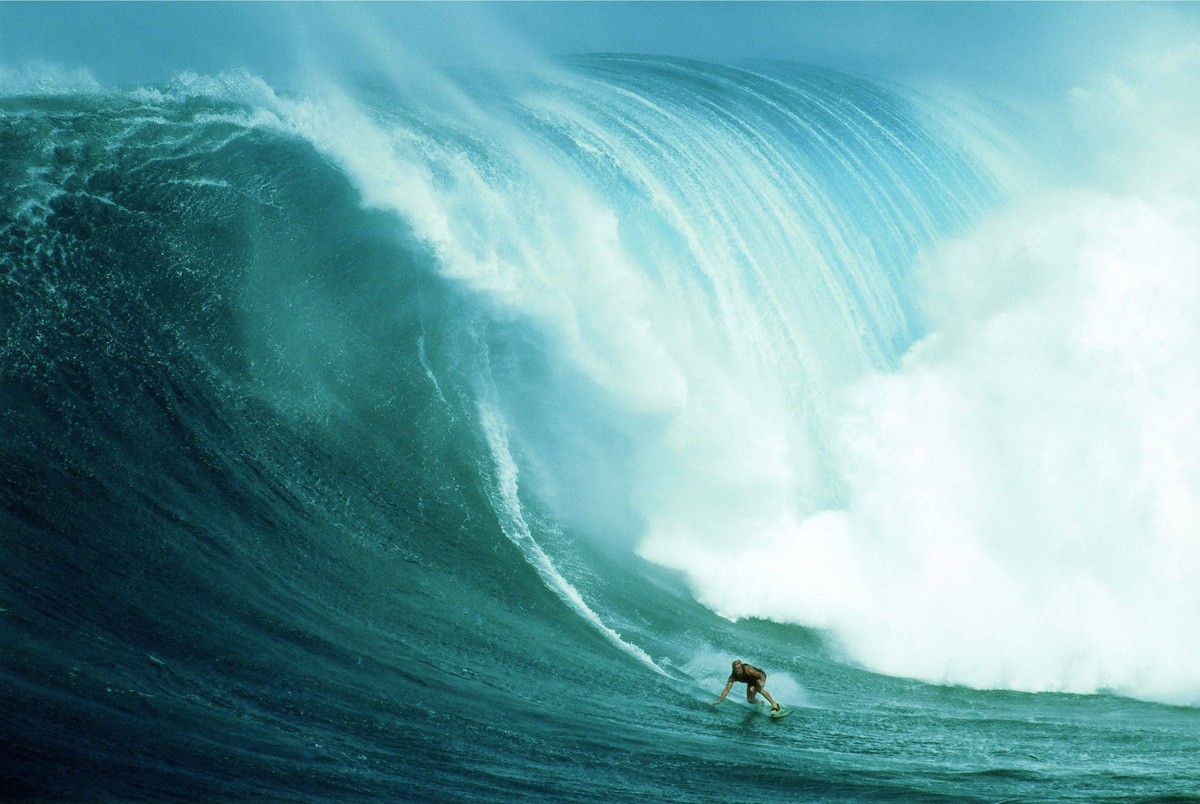
“So when she looked into it, I think after she kind of investigated a little deeper, she realized this wasn’t a surf film. It was a human film, and I would prefer someone with an outside perspective looking at the subject matter. She is a woman from the East Coast who made a film that has something for people who know nothing about surfing. The glorification of us riding giant waves was not my original intention with this project anyway.”
Hamilton believes Kennedy’s change of heart came when she realized the story did not revolve around “just a surfer” but a modern-day explorer who seeks out previously unknown waters. He says he was quite moved when he saw Take Every Wave all put together for the first time, alongside Kennedy at this year’s Sundance Film Festival.
“It’s an emotional thing if you take anyone’s life, condense it into two hours and have them watch it. I cried. There is nowhere to run, nowhere to hide. This is it. Would I like to have some things changed [in the film]? I can’t make my life different, so I can’t make the film different. She chose what would go in. It was her discretion, her storytelling.”
Hamilton’s story, as told in the film, includes some hard truths, including his near divorce from Reece, mangled bones (as seen in disturbing x-rays), over-the-borderline child abuse suffered at the hands of his stepfather and soured friendships with members of his former big-wave riding “Strapped Crew” (because they strapped themselves onto their longboards).
“I wanted to give the film as much of an opportunity to be as impactful as it could,” Hamilton says. “I presented Rory everything and told her, ‘Talk to anybody you want.’ I didn’t put reins on her, as most people have a tendency to do. At the end, it is what it is. I can’t undo what the story is.”
Still, of the finished film, Hamilton admitted that “not everything is in there.” Variety film critic Dennis Harvey mentions that in his Take Every Wave review when he notes the doc barely delves into its subject’s first marriage to Brazilian bodysurfer, big-wave rider and stand-up paddler Maria Souza. Hamilton met and fell in love with the host of the MTV show The Extremists With Gabrielle Reece, which ran on MTV in 1995-96. Hamilton and Souza, the mother of his oldest daughter, Bela, did not divorce until 1997.
Hamilton insisted he had nothing to do with anything not being in Take Every Wave.
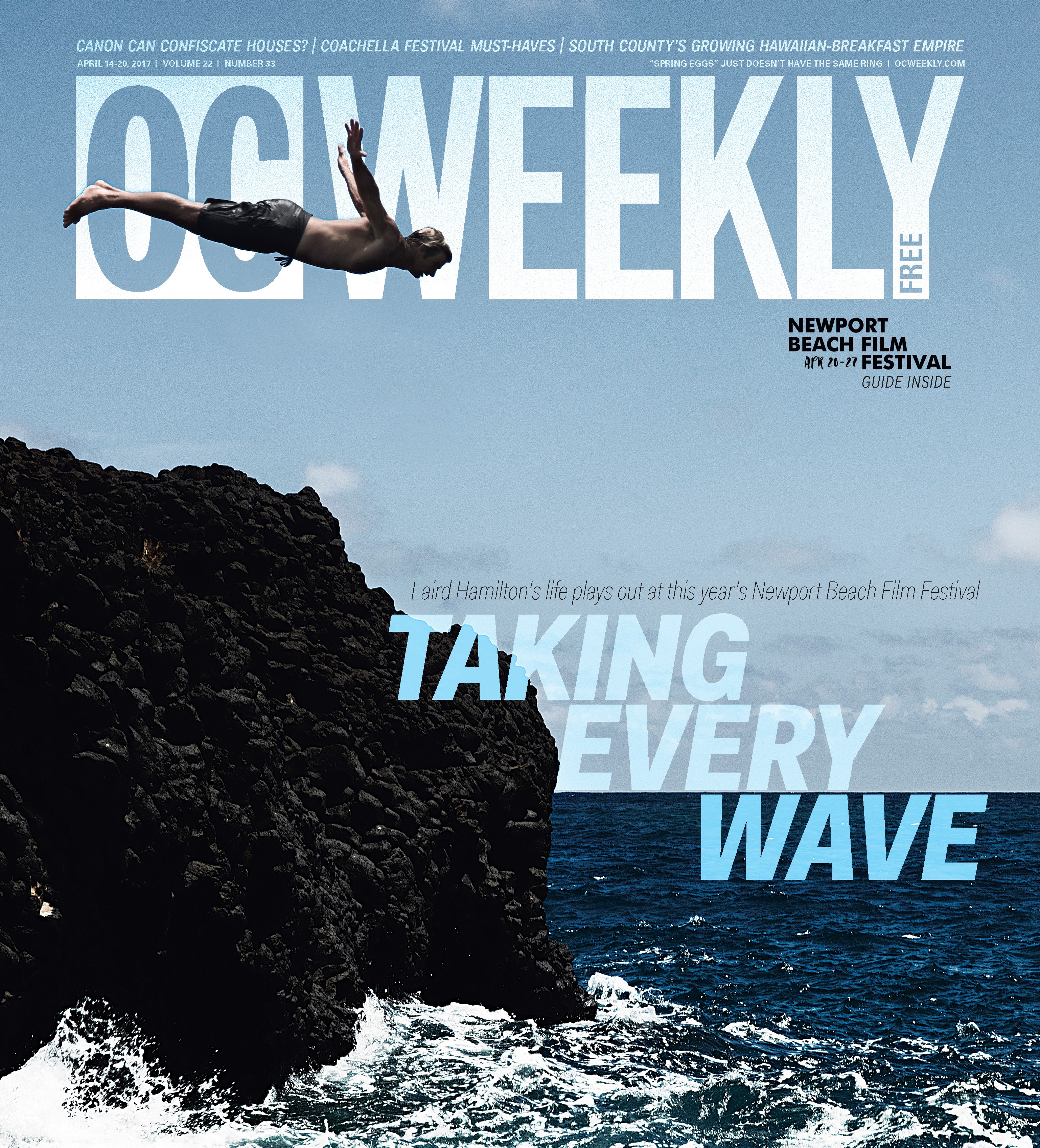
“Rory purposely left some things out to keep the story rolling,” he explained. “I relied on her directorial expertise to do that. You won’t tell me how to ride a wave, and I won’t tell you how to direct a film.”
The overall impression Take Every Wave leaves is how grounded this superstar athlete is. The Malibu Mob’s star power aside, Hamilton mixes just as freely with those of us who are card-carrying members of the unwashed masses.
“I’m always surprised by people who do a job that is to make other people know who they are and then they are shocked people know who they are,” Hamilton says. “People knowing who I am is part of what I do. People seeing what I do affords me a certain lifestyle. It allows me to continue to do what I do, it subsidizes it. John McEnroe told me, ‘Don’t worry about it when people want you to take a picture with them. Start worrying when they stop.’
“I’m pretty realistic about that. I’m honored by it. If a kid or guy comes up to me, it means that my art is being appreciated to the point where people know me. It’s important to keep a proper perspective. Don’t ask to be silly. Don’t sit in a corner wearing a bandana and having a newspaper in your face and wonder why everyone is staring at you. I have found that acting normal eliminates half of the drama of being known.”
The other half of the drama can be tied to people having preconceived notions about what kind of person one is based on film, TV and other media. In Hamilton’s case, since he is mostly seen being very serious in the face of waves that could end his life, many assume that is how he is all the time. Take Every Wave shows a softer side when he is home with his kids, a funny side when he interacts with his pals after a long day in the surf and even a goofy side, especially in the archival footage from his childhood.
“We all share the same struggles being a human on Earth,” Hamilton says. “A lot of time people get portrayed a certain way and that’s how everyone thinks they are. It happens to actors and actresses all the time, they are known as their characters. ‘You’re lethal weapon.’ No, I’m an artist who does all these other things.”
[
Hamilton relates a story—which is also shared in Take Every Wave, so . . . spoiler alert!—from his first fictional movie role: brash, materialistic pro surfer Lance Burkhart in 1987’s North Shore. “I had this little kid come up to me one time and say, ‘You’re Lance from North Shore.’ I said, ‘Yeah, that’s a character I played.’ He puts his hand out and when I go to shake it he pulls it away and says, ‘I don’t shake hands with cheaters.’
“So I have been able to experience that in a most-minute perspective. I can appreciate the plight actors go through, trying to explain themselves despite the roles they have been in. That’s why so many hide.”
Hamilton relishes not being a hider because when it comes right down to it, we’re all the same. “Only so much of what anyone does is interesting,” he says. “So much of anyone’s life is kind of the mundaneness of existence: sleeping, eating, the maintenance of being alive.”
Take it from someone who is very much alive, has lived many lives and nearly lost at least a couple of them. And for gawd’s sake: SLOW DOWN!!!
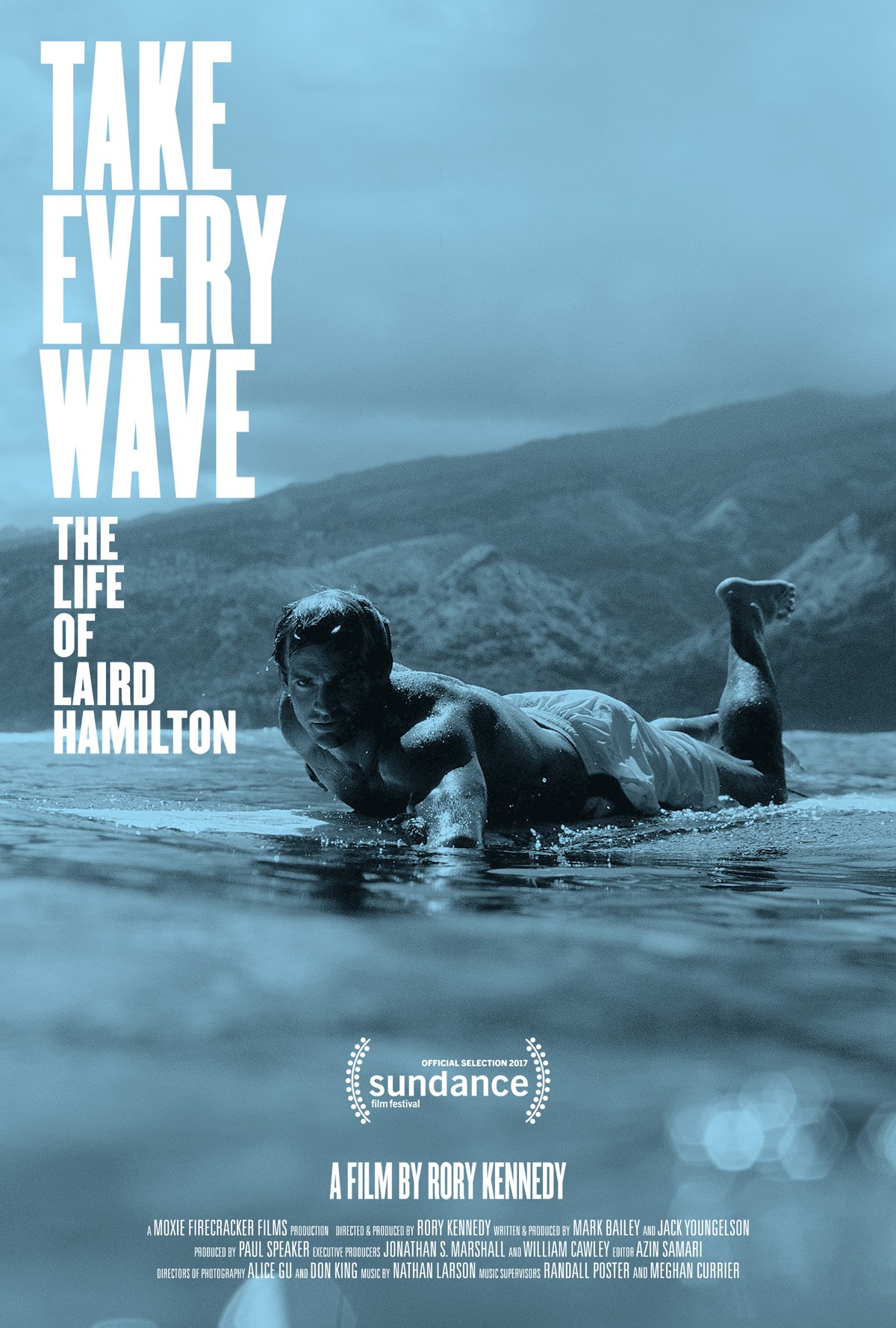
LAIRD HAMILTON’S FIVE FAVE FILMS . . . FEATURING HIMSELF
Laird Hamilton says that, being raised in Hawaii, and not that interested in school, he often found himself around movie sets even before he was famous. “I appreciate the difficulty in what it takes to act and the difficulty of the filmmaking process. It is over-glamorized. People don’t realize it is not fun. Even shooting surfing, it is still filming. It is not free surfing. You are catering to film angles. You need to get the shot.” Still, he considers himself “fortunate” to have been involved in film productions. According to imdb.com, Laird John Hamilton has six acting credits and 47 others where he has appeared as himself, ranging from talk and reality shows to animated projects and one helluva lot of surf flicks. Here are his five favorites, in no particular order:
Die Another Day (2002). The movie opens with James Bond (Pierce Brosnan) and two colleagues surfing on a giant wave. Actually, Hamilton and his fellow “Strapped Crew” members Dave Kalama and Darrick Doerner were the ones on the sticks. “It was awesome that we got to do what we do and be included in that franchise,” Hamilton says.
Riding Giants (2004). Stacy Peralta’s action-sports film about the surfers of the world’s biggest waves and the culture surrounding them also includes Kalama and Doerner. “It’s near to my heart because of the fact that we got to tell some of the big-wave history that didn’t get exposed before,” Hamilton says.
The Descendants (2011). Alexander Payne’s dramedy is about Hawaiian land baron Matt King (George Clooney) trying to reconnect with his daughters after his wife is seriously injured on a boat piloted by surfer dude Troy Cook (Hamilton). “It was a unique opportunity to work with Alexander Payne and Mr. Clooney,” he says of the experience. “When in the presence of those kinds of people, it’s really fortunate to sit there and see how they work. To be involved in that was really something.”
Waterworld (1995). Hamilton was the stunt double for Kevin Costner, who played a mutated mariner on a future planet Earth almost completely covered in water due to melted polar ice caps. “That was an adventure,” Hamilton says in the understatement of the year. At one point he was washed away and lost at sea before being rescued. “That was almost the end,” he says matter-of-factly.
Take Every Wave: The Life of Laird Hamilton (2017). “It’s my life. This is the first film that has been so comprehensive. I hadn’t been at a point until now to have enough subject matter to make something interesting, compelling and fun. I had to live more than 50 years to make this.”
BONUS: North Shore (1987). “That’s way down at the bottom of the list.”
Take Every Wave: The Life of Laird Hamilton was directed by Rory Kennedy; written by Mark Bailey and Jack Youngelson; and stars Laird Hamilton, Gabrielle Reece, Nick Carroll, Darrick Doerner, Sam George, Bill Hamilton, Dave Kalama, Buzzy Kerbox, Brett Lickle and Gerry Lopez. Screens as part of the Newport Beach Film Fest’s opening night gala at Edwards Big Newport 6, 300 Newport Center Dr., Newport Beach; www.newportbeachfilmfest.com. April 20, 7:30 p.m. $225.
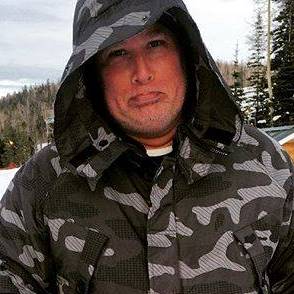
OC Weekly Editor-in-Chief Matt Coker has been engaging, enraging and entertaining readers of newspapers, magazines and websites for decades. He spent the first 13 years of his career in journalism at daily newspapers before “graduating” to OC Weekly in 1995 as the alternative newsweekly’s first calendar editor.

